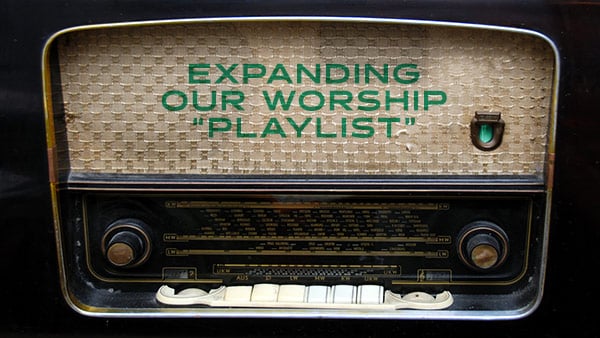
There’s a reason why we hear the same songs over and over again on the radio: stations meticulously program music to target a specific type of listener.
When I was growing up, stations played as many as 40 new songs in "current" weekly rotation--and thus the term “Top 40 Radio.” After several weeks, these "current" hits would become "recurrent" hits and eventually "gold" or "classic" songs.
Over the years, stations learned that playing a more concentrated list of favorites more frequently helped build a more homogenous core audience for advertising and support. But playing fewer songs more frequently for longer periods significantly decreased the total number of songs in their playlists--and eventually reduced by two-thirds the number of new songs that programmers could introduce.
Today, rather than playing 40 newer songs in current rotation, the average radio station has about 14 newer songs in current rotation and the average single stays on the charts for nine months rather than nine weeks. Thus, the same old same old.
Years ago, a Top 40 Pop station might play The Supremes, The Charlie Daniels Band, The Carpenters, and The Who. These days, however, music stations have fairly strict formats: R&B, Country, Pop, Religious or Rock—with only Oldies stations playing songs from multiple genres.
Like their counterparts at broadcast radio, many of today’s churches find themselves "narrow-casting" the music in their services to appeal to a certain type of congregant. Whether it’s traditional hymns or the latest modern worship songs, when we use the same songs frequently, there’s a strong likelihood our congregations will become very homogenous.
Uniformity might be a good strategy for radio, but is it the best idea for your church?
Certainly, there are practical considerations about finding a common language and context for a community worship experience, but programming to a very narrow group of people naturally excludes a lot of other people.
We are less like our parents than any generation before us, and our children are less like us. For some congregations, the solution has been to set up separate worship services for grandparents, parents and children. Other churches, however, have expanded their musical boundaries so that parents can appreciate what resonates with their children and where children can learn to respect what moves their grandparents. We’ve all seen the whiplash move toward modern praise and worship in the name of relevancy. And as much as I love modern worship music, we can’t ignore the fact that what’s relevant to one group isn’t necessarily relevant to another.
And it's not just about age and taste, it's also about culture and ethnicity. In 2012, non-white births outnumbered Caucasian births in America for the first time. Our country is more culturally and ethnically diverse than ever before. One reason our congregations may lack diversity is that a narrow musical style is more off-putting than inviting.
I’m not suggesting we adopt an “anything and everything” format for our services. Rather, I’m challenging those of us who have been focusing on a small, stylistically narrow list of songs to expand the number and musical diversity of our “playlist” and decrease the frequency with which we put a particular song into rotation.
There are obviously good reasons to use the same song one week after the other (i.e. teaching it to your congregation, celebrating a theme), but thoughtfully broadening the list—and style—of our musical material may help give a worship voice to a more diverse congregation.
A modest suggestion: More songs. More diversity. Less frequency.
So if you’ve never tried Southern or Black Gospel, give it a whirl! If you’ve never done an a cappella or instrumentally-orchestrated piece, go for it! Find a new setting for a familiar hymn. Find a traditional setting for a new praise song. If you’ve gotten away from using a choir, assemble a choir to back your worship team…or use a worship team with your choir. Let your congregation begin to expect the unexpected. Move from a Top 14 toward a Top 40 approach where all kinds of great worship choir music can resonate with the hearts of a diverse but unified congregation.
At the end of the day, we’re not simply picking music for the ears of our congregants. Rather, we’re finding music that helps give voice to our deepest thoughts and feelings as we collectively give God the glory He is due.
--For more helpful articles about blended worship services and the issue of musical style, check out www.discoverworship.com and these articles:
- Arguing the Merits of a Blended Worship Service
- How Can We Add Musical Diversity to our Services?
- The Non-Issue of Style: It's Just Worth It
- Can Too Much New Get Old?
- Variety for Variety's Sake?
- 5 Compelling Reasons to Do More A Cappella Singing
- Worship on the Radio
- Expanding Our Worship Playlist
- The Age of the Top 25 CCLI Worship Songs
- The Both/And of Worship



















